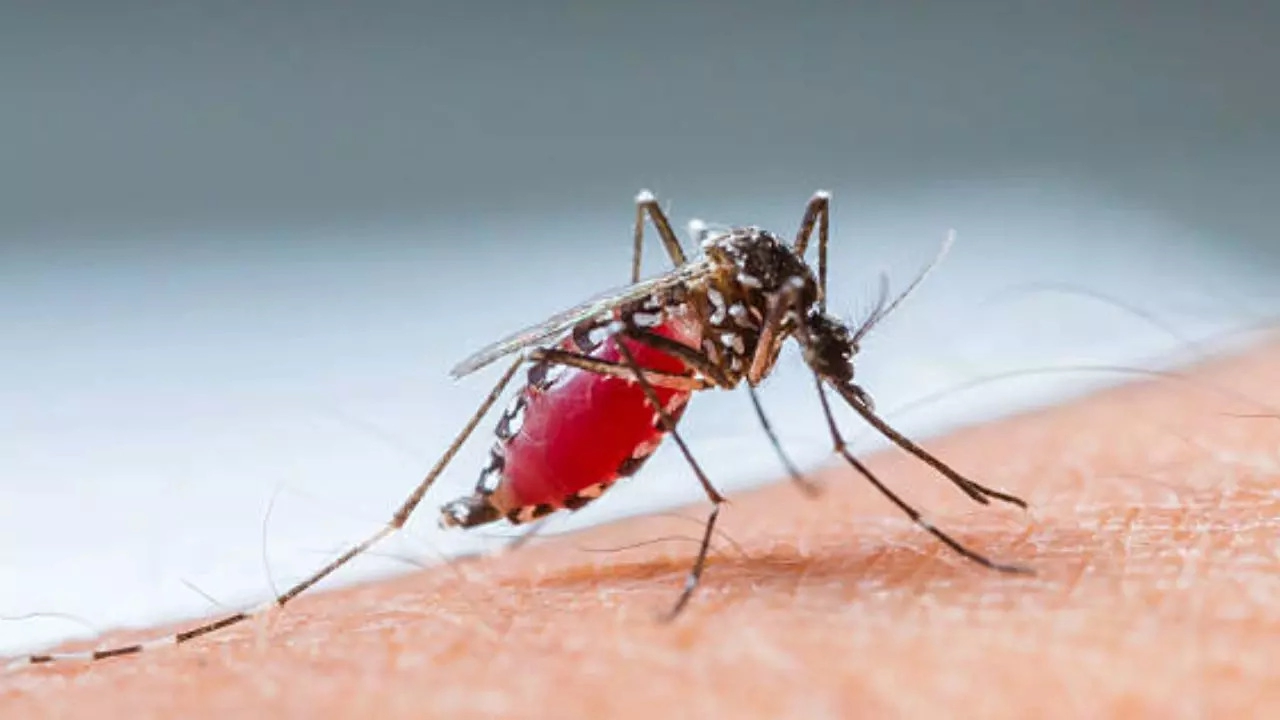Pallavi Mehra • 24 Sep 2024
Dengue Cases On Rise In Tricity: Panchkula, Mohali, Chandigarh Reports Symptoms

Dengue Alert: Panchkula Reports 503 Cases, Chandigarh at 25 - Symptoms To Watch Out For (Image Credits: iStock)
The tricity region, comprising Panchkula, Mohali, and Chandigarh, is witnessing a sharp rise in dengue cases. As of September 21, Panchkula leads the tally with a staggering 503 cases, followed by Mohali with 194 cases, while Chandigarh has reported 25 cases. Health authorities are urging residents to take necessary precautions as dengue cases typically peak during this time of year, especially after the rains.
As per health experts, dengue cases are rising rapidly, and people should consult a doctor immediately if they experience high-grade fever, body aches, or rashes. Early diagnosis can prevent the disease from progressing into more severe stages,” he said.
Dengue Cases On Rise in Panchkula and Mohali
Panchkula has been hit the hardest, with 503 cases reported, making it the worst-affected region in the tricity. In response, health officials are rapidly increasing efforts to control the outbreak. Dr Suman Singh, director of health services in Chandigarh, shared insights into the nature of this year’s outbreak, explaining that different strains of the dengue virus are in circulation, contributing to the varied severity of cases. "We are witnessing a mix of dengue virus strains this year, which complicates the situation. Some strains lead to mild symptoms, while others can be life-threatening if not treated promptly," she said.In Mohali, where 194 positive cases have been recorded from the 3,339 people tested this year, authorities are also ramping up efforts to contain the spread. Despite these efforts, the rising numbers indicate a need for increased vigilance among the public. Mohali's health department is actively urging residents to eliminate mosquito breeding grounds in and around their homes to prevent the situation from worsening.
Types of Dengue Fever
Dengue fever is caused by the dengue virus, which is transmitted through the bite of infected Aedes mosquitoes, particularly the Aedes aegypti species. There are four different strains or serotypes of the dengue virus, and a person can be infected by all four over a lifetime.
1. Classic Dengue Fever: Classic or uncomplicated dengue fever is the most common form of the disease. Symptoms usually appear 4-10 days after being bitten by an infected mosquito. Typical symptoms include:
- Sudden onset of high fever
- Severe headaches
- Pain behind the eyes
- Joint and muscle pain (often referred to as "breakbone fever")
- Skin rashes
- Nausea and vomiting
This form of dengue fever is generally self-limiting and lasts about 7-10 days. However, it can cause significant discomfort and fatigue that may last for weeks.
2. Dengue Hemorrhagic Fever (DHF): Dengue Hemorrhagic Fever is a more severe form and can lead to bleeding, blood plasma leakage, and low platelet count (thrombocytopenia). Symptoms include those seen in classic dengue but with additional signs of severe illness such as:
- Bleeding gums or nose
- Blood in vomit or stool
- Severe abdominal pain
- Persistent vomiting
- Difficulty breathing
DHF requires immediate medical attention and hospitalization, as it can lead to shock or organ failure if left untreated.
3. Dengue Shock Syndrome (DSS): The most severe form of dengue, Dengue Shock Syndrome, can be fatal if not treated promptly. In addition to the symptoms of DHF, DSS includes:
- Severe drop in blood pressure
- Rapid, weak pulse
- Cold, clammy skin
- Restlessness
DSS is life-threatening and needs emergency medical intervention. Patients with DSS often require fluid replacement and close monitoring in an intensive care setting.
Symptoms and Early Detection Of Dengue
The symptoms of dengue can vary depending on the severity of the infection and the individual’s immune response. However, early detection is key to preventing complications. The most common signs of dengue include:- Sudden high-grade fever
- Severe headaches and muscle pain
- Pain behind the eyes
- Nausea, vomiting, and fatigue
- Rashes appearing 2-5 days after the onset of fever
- Mild bleeding (such as nosebleeds or gum bleeding)
Health experts urge the public that anyone experiencing a combination of these symptoms, particularly during the monsoon or post-monsoon season, should immediately seek medical advice. Delaying treatment can result in severe complications like Dengue Hemorrhagic Fever or Dengue Shock Syndrome.
Dengue Prevention and Control
Dengue prevention primarily involves controlling the mosquito population and minimising exposure to mosquito bites. Aedes mosquitoes, the carriers of the dengue virus, breed in stagnant water, making it essential to eliminate water collection in and around homes. Residents are advised to:- Regularly check for and drain stagnant water from containers, flowerpots, buckets, and tyres.
- Use mosquito repellents and wear long-sleeved clothing, especially during dawn and dusk when Aedes mosquitoes are most active.
- Install window screens and use bed nets to minimize the risk of being bitten.
- Participate in community-wide mosquito control efforts, such as fumigation drives and awareness programs conducted by health authorities.
Get Latest News Live on Times Now along with Breaking News and Top Headlines from Health and around the world.